2022 ! I hadn't been to Email Marketing Day since the 2022 edition. This year was an opportunity to renew my acquaintance with this event, which I saw come to life in Strasbourg in 2013 under the leadership of Régis, Julie and the whole Clic et Site team at the time.
This 2025 edition organized in Biarritz was an opportunity to meet up with many players in the email marketing ecosystem, and it was really cool. I also had the opportunity to host a remake of the Best of Badsender that I had produced in 2013, and to take part with other participants in the event. deliverability experts to the "Deliverability Clinic".
This article is freely available.
It took time and expertise!
This month, thanks to our customer-sponsors: Actito, Puig France, Voyageurs du Monde, CMI France, Cegeka, BPI France, Citeo, FFT, Castor & Pollux, Clarins, Mews Group. They enable us to publish free content. Thanks to them, Badsender is fulfilling its mission of educating the French emailing and CRM ecosystem to promote responsible email.
With over 10,000 monthly readers, if only 1% became customers, we'd continue this mission for a long time to come! Become a customer and benefit from our expertise while supporting the production of open knowledge.
What conclusions can we draw from this 2025 edition of EMDAY?
I like to present the conclusions before the analysis 😉 It allows you to take stock directly before going into detail.
Here's what I've taken away from the discussions, workshops and conferences at Email Marketing Day 2025.
Artificial intelligence
AI is on everyone's lips, and is beginning to appear in every tool. But in concrete terms, the uses we are currently seeing remain extremely basic, not to say disappointing. Or they are hypothetical, announced but not in production. Or they have not been demonstrated, as some people's culture of secrecy makes it impossible to see what is really going on. And unfortunately, 2025 isn't exactly the year of digital ecology, not a single word about its environmental impact.
Tracking openings
It's not certain that the intervention of Nacera Bekhat from the CNIL, an excellent one by the way, has allayed the fears of the emailing community on the question of the consent to tracking openings. There are three main points:
- As the CNIL does not make the law, you don't have to wait for its recommendations before complying.
- We won't miss out on a recommendation on tracking openings, which is still subject to change, and a few details of interpretation on the part of the CNIL.
- B2B consent will be impacted! Even if consent for sending commercial e-mails is not clearly defined in B2B, one thing is certain: consent will have to be obtained for tracking openings. This changes a lot of things for a sector that isn't used to managing consent!
Accessibility
Since May/June, digital accessibility has been on everyone's lips. Unfortunately, the conference given by Mailjet at this EMDAY was clearly not up to the challenge. Speaking out on accessibility, and more specifically on theemail accessibility requires real expertiseThe risk is to spread untruths and approximations.
Email acquisition
The world of email acquisition (self-styled email marketing, which sometimes muddies the waters) seems to be under more stress than ever. Between increasingly restrictive deliverability rules and the arrival of tracking consent, the framework for their activities continues to tighten. Neither the CNIL's intervention nor the comments made at the deliverability round table will reassure them.
Meetings
On a personal level, EMDAY is an opportunity to meet new people. Old acquaintances with whom I'm delighted to share a drink, more recent partners, customers (hello Léa's) and others I didn't know.
On a personal note, I enjoyed being one of the experts at the "Deliverability Clinic". It's always nice to see that in just a few minutes of discussion, you can teach your interlocutors so much.
And to top it all off, spending a bit of time IRL (in real life) with colleagues and former colleagues that I don't often see in the flesh feels really good!
EMDAY25 LinkedIn Live rewrite
During this edition of EMDAY, I had some fun commenting on the workshops and conferences I attended in the comments of a LinkedIn post published for the occasion.
Below is a transcript/reprint of what was said at the conferences and workshops I attended.
2/10 - 2pm: Introduction by Régis BACHER for this 12th edition, attended by 160 people this year!
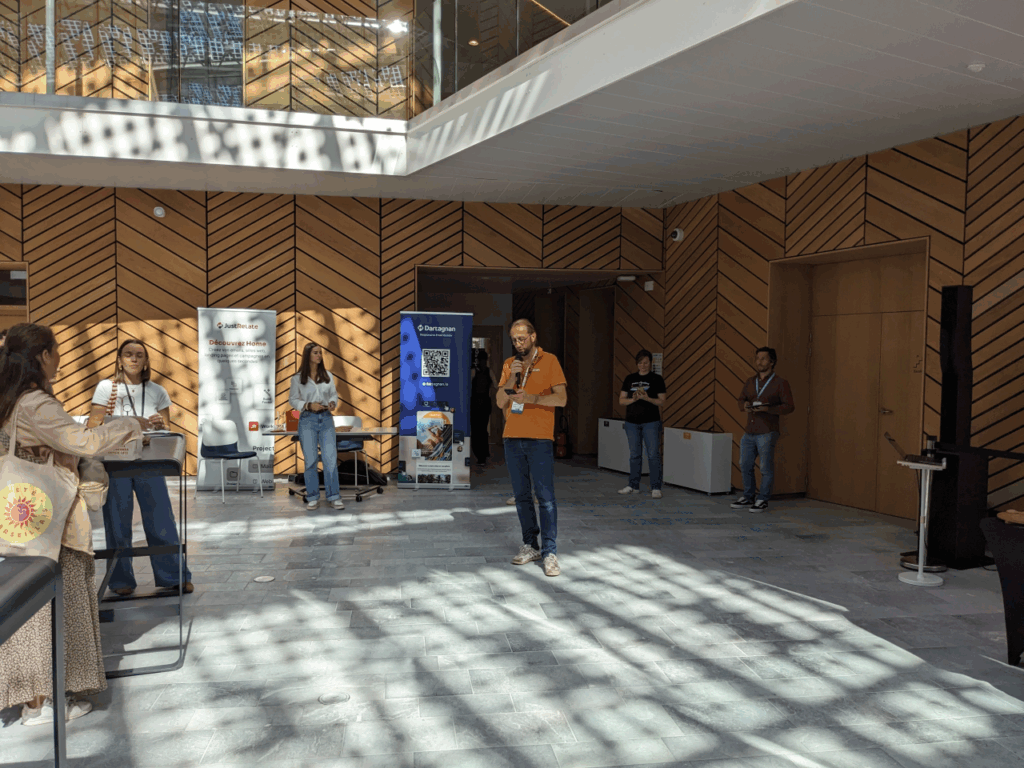
One of the special features of EMDAY, as Régis points out, is that it is run by an association. This associative structure enables the event to retain its spirit of sharing and exchange between industry professionals. In fact, the association is actively seeking new members and volunteers to keep this key event in the world of email marketing going.
2/10 - 2:15pm: Alliance Digitale presentation by Arthur Millet
Alliance Digitale was a partner at this year's emday event, providing an insight into its role in the ecosystem.
This association brings together French digital marketing professionals, and is the result of the merger of several historic organizations such as IAB France and DMA France. Although it is not officially presented as a "union", its activities include not only the federation of the ecosystem and the production of recommendations, but also extensive representation to regulatory bodies to defend the sector's interests.
I discovered that Alliance Digitale also hosts a working group specifically dedicated to deliverability issues, led by Laurent Garnier and Ariane Journiac - an interesting initiative for email marketing players.
2/10 - 2:30 p.m.: 8 Marketing Automation pitfalls to avoid by User.com
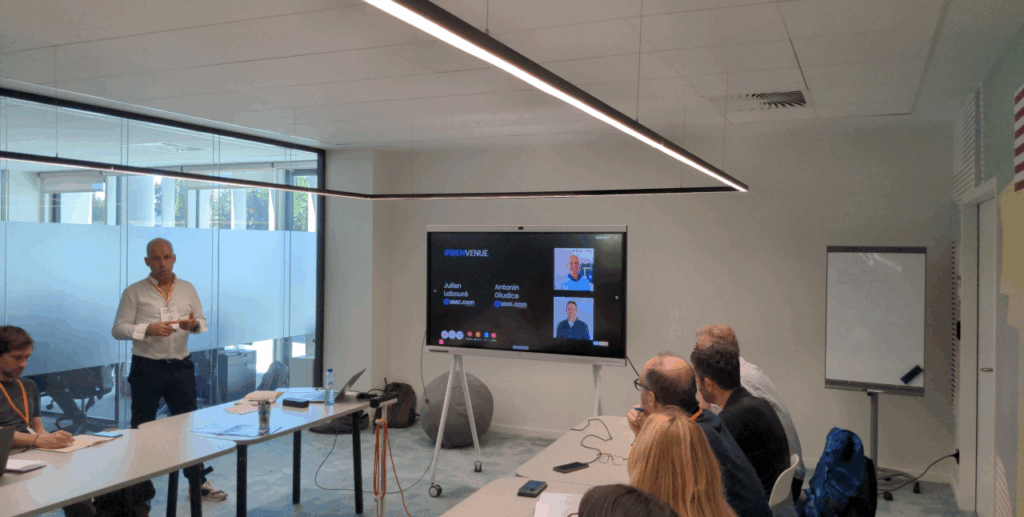
The conference was moderated by Julien Labouré, who opened with a striking statistic: "50% of companies only use the basic functionalities of their marketing automation tool, or rudimentary scenarios".
User.com has identified 8 major marketing automation pitfalls to avoid:
- Automate without a clear strategy or overview of the customer journey
- Neglect audience segmentation (focus on hot data: contact status, site interactions, etc.).
- Automate without personalizing, sending impersonal messages perceived as "robot messages
- Saturating your contacts with solicitations and falling into the trap of digital harassment
- Neglecting testing and continuous optimization, which amounts to "driving by instinct".
- Forget about marketing/sales alignment, generating leads that nobody processes
- Ignore post-conversion commitment, leaving "50% value on the table".
- Not integrating real time by keeping pre-programmed scenarios without adapting to live behavior
This presentation, while offering pertinent advice, remained rather generalist and lacked operational aspects. As is often the case in this type of intervention, we are told what to do, but rarely how to put it into practice.
2/10 - 3:30pm: Mailjet speeds up emailing creation
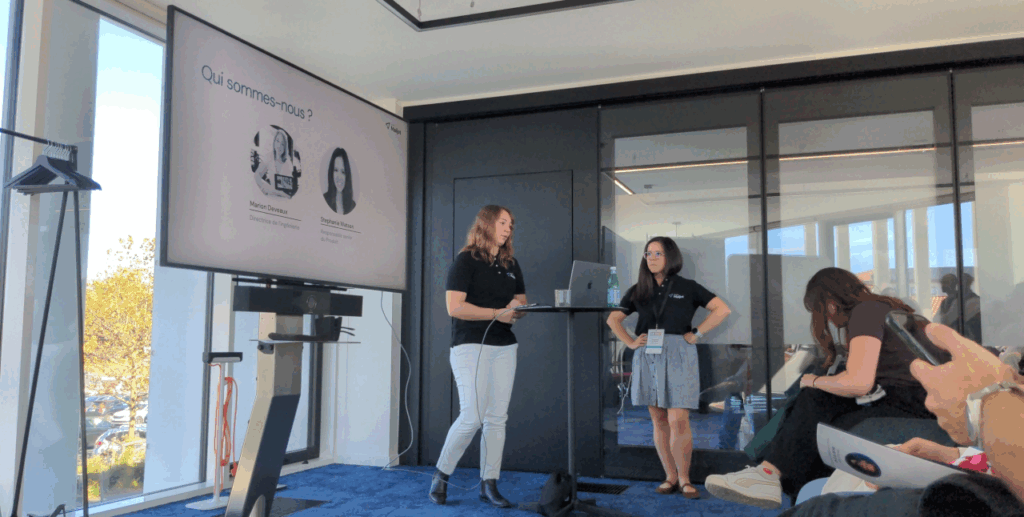
The presentation began with a focus on Black Friday and Cyber Monday, two must-attend events for email marketing professionals. According to the statistics presented, over 50% of consumers want to receive information by email at least one month before Black Friday.
The watchword for these crucial commercial periods: planning! The speaker stressed the importance of measuring business impact, industrializing campaign creation, segmenting audiences with the help of AI, and continuously optimizing performance.
A email builder demonstration from Mailjet was presented, with a focus on the "brandkit" functionality, which makes it easy to define branding parameters in emails.
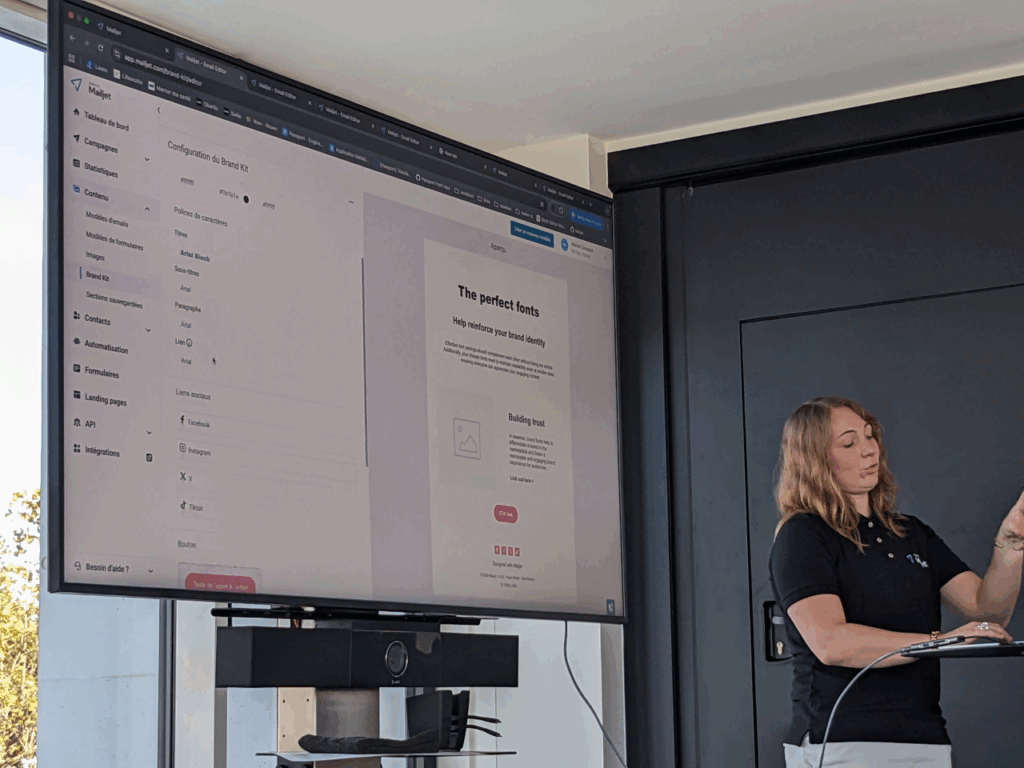
Mailjet's AI assistance is still rather frustrating. While it is capable of creating templates and drafting an email from a prompt, the result isn't exactly stunning. However, I'd like to commend the approach of showing the tool live. It's always risky, but it's particularly useful to get a concrete idea of its capabilities.
3/10 - 9:15 a.m.: Editorial newsletter session
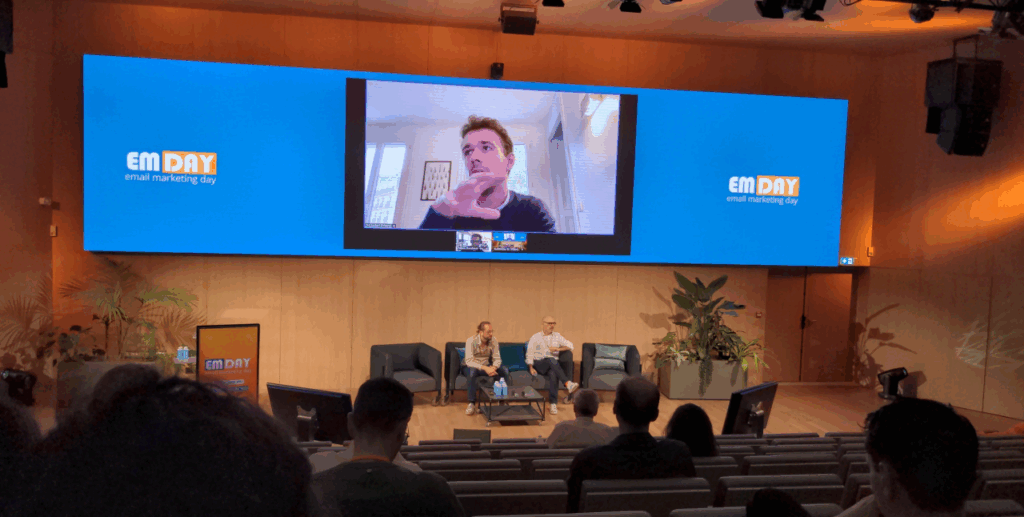
This session was moderated by Bruno Fridlansky with the participation of Eloi Joubert (L'Essentiel Media), Fabien Brouillaud (MagNews) and Régis Bacher (ODE News), all of experts in editorial newsletters.
Régis Bacher presented the ODE News newsletter, an ultra-local newsletter concept that aggregates local news feeds to share weekly events taking place around a cluster of villages. This hyper-local format meets a real need for local information.
Fabien Brouillaud from MagNews shared his experience with an in-house newsletter created from around a hundred RSS feeds on email themes, which also serves as a showcase for customer demonstrations.
An interesting technical point: MagNews' Nurtureme newsletter uses AMP technology, enabling email preferences to be managed directly inside the message.
For those interested in exploring this technology, you can subscribe to the Nurtureme newsletter via : https://nurtureme.diennea.com/
However, as the speaker pointed out, AMP's main limitation remains its restricted compatibility, working only on Gmail and Yahoo. An obstacle to mass adoption of this technology.
As for L'Essentiel, their newsletter is now available in 15 different cities. Eloi Joubert spoke of the challenges of expansion, notably the difficulty of launching new editions in smaller cities where monetization proves more complex.
An important strategic development: L'Essentiel is currently diversifying the distribution of its content beyond the traditional newsletter, integrating website, WhatsApp and social networks. This omnichannel approach has enabled them to reach over 700,000 subscribers throughout France.
In terms of performance, the speakers shared some impressive statistics: L'Essentiel posted 30 to 40% opens for its daily newsletters, and 60 to 70% for its weekly editions. The weekly ODE newsletter shows similar performance, demonstrating the effectiveness of the local format.
Finally, innovation remains at the heart of our strategies, with MagNews experimenting with a pilot using AI to build personalized feeds, thus compensating for the decline in traditional RSS feeds. This approach also makes it possible to generate automated summaries and categorize content in a more relevant way.
3/10 - 10am: CPA emailing barometer
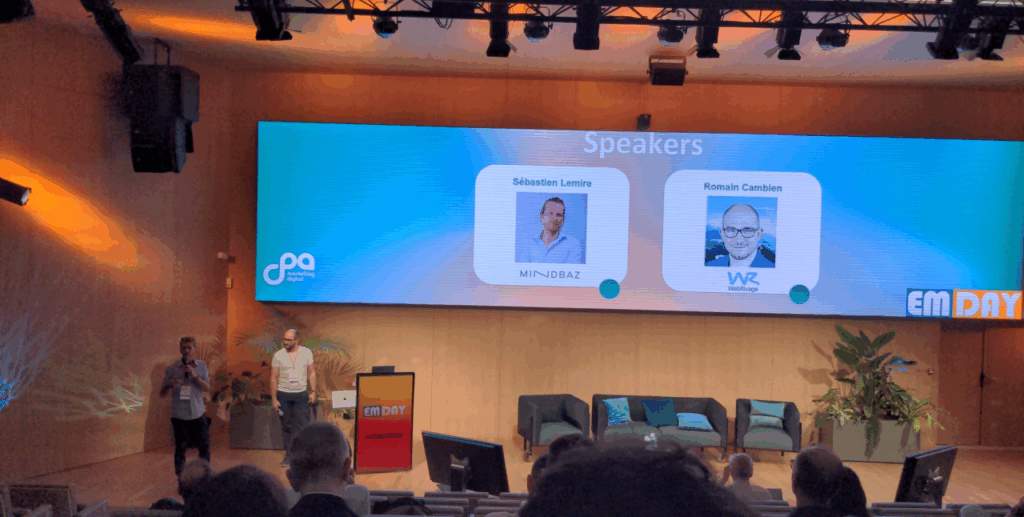
Sébastien Lemire of Mindbaz and Romain Cambien of Webrivage presented the emailing barometer of the CPA, an initiative that marks the organization's return to emday to reconnect with the email marketing ecosystem.
The Collectif de la Performance et de l'Acquisition (CPA) used data from its members to build this barometer, with statistics dating back to 2024. An important point to note: this data essentially represents the email acquisition ecosystem, not the customer loyalty ecosystem.
This distinction is essential, as the barometer does not necessarily reflect the relationship-based email marketing practices of the majority of brands. The terminology used can create confusion between these two worlds, which, although sharing the same channel, pursue different objectives.
It would be wise to better differentiate acquisition and CRM in this type of presentation, especially when sharing performance indicators. The very notion of "performance" remains ambiguous for CRM/loyalty professionals, who may find it difficult to determine whether this data applies to their context.
Download the barometer https://www.cpa-france.org/project/le-barometre-emailing-newsletter-2025/?utm_source=Badsender
3/10 - 10h20: The new SMS, WhatsApp and RCS channels
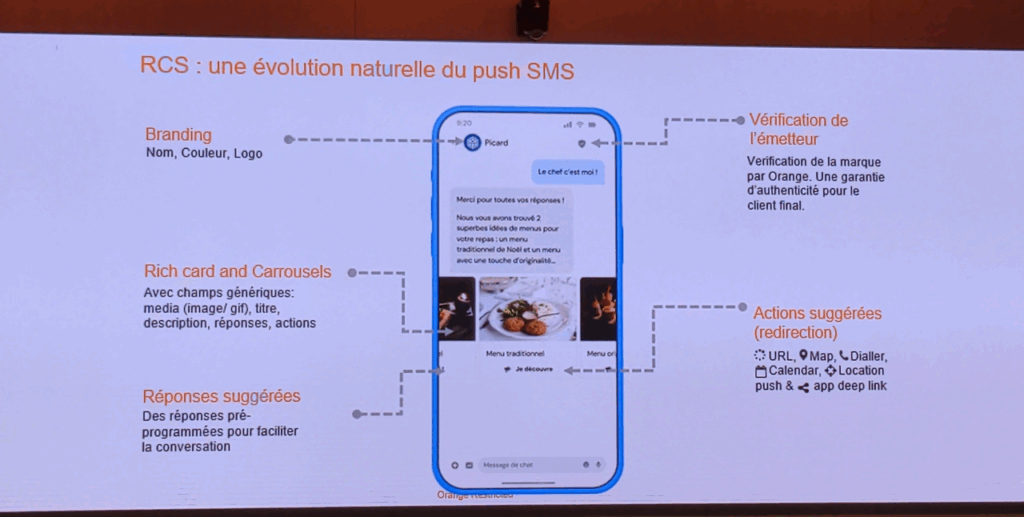
This session on new messaging channels proved particularly instructive, exceeding my initial expectations.
RCS (Rich Communication Services) is currently undergoing significant development, with a number of recent innovations. Its compatibility now reaches 80% of phones on the market, thanks in particular to Apple's adoption of this technology.
A notable advantage of RCS over traditional SMS is the simplicity of its opt-out process, offering a better user experience.
It should be noted, however, that the RCS ecosystem has a much more limited openness than email, which is a significant limitation.
Validating the sender's identity is another major advantage of RCS over SMS, effectively helping to prevent smishing (SMS phishing).
Compared with email, questions persist about the openness of the RCS standard, not least because of the central role played by Google in the infrastructure.
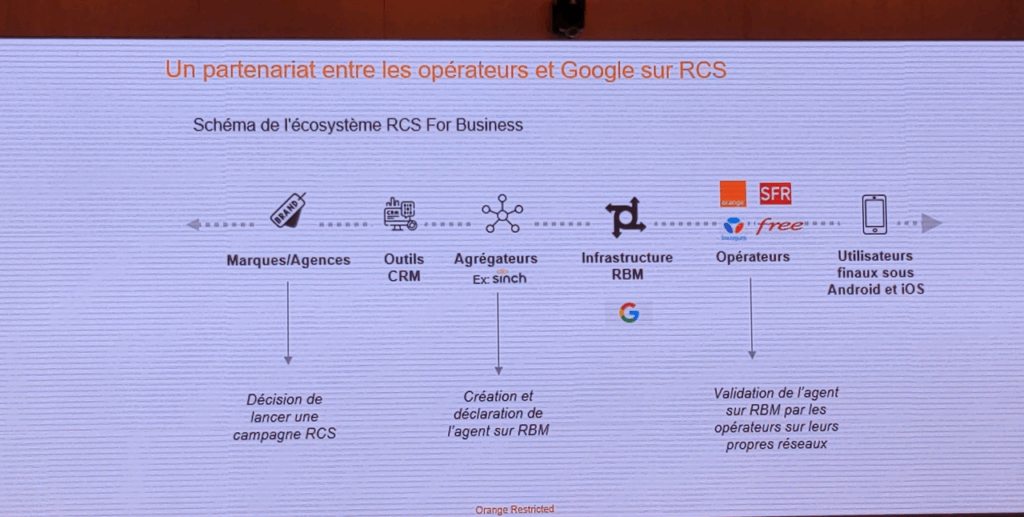
One point that facilitates adoption: as SMS and RCS consent are identical, companies that already have a base of opt-ins on mobile numbers can easily exploit the RCS channel.
Guillaume Escolier of Wax pointed out an important distinction: WhatsApp is positioned more as a conversational channel, while RCS is geared more towards promotional communication.
One notable fact that drew amusement from the audience: WhatsApp message rates in France are among the highest in the world.
3/10 - 12pm: Mailjet accessibility session
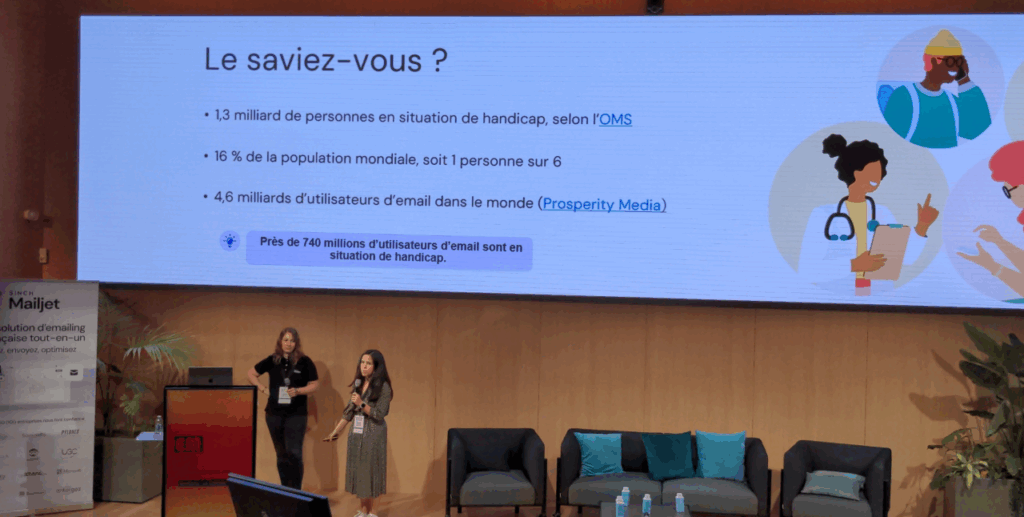
This accessibility session, hosted by Mailjet, covered a number of fundamental best practices. While the content presented provided a useful introduction, it sometimes lacked technical depth on certain aspects. For those wishing to explore this topic in more detail, Badsender's comprehensive guide to email accessibility is a particularly rich resource: https://www.badsender.com/guides/accessibilite-et-email/
I noticed a few inaccuracies in the presentation, suggesting that the subject would have benefited from being dealt with by more seasoned specialists in digital accessibility applied to email marketing.
3/10 12:30 - The augmented email marketer
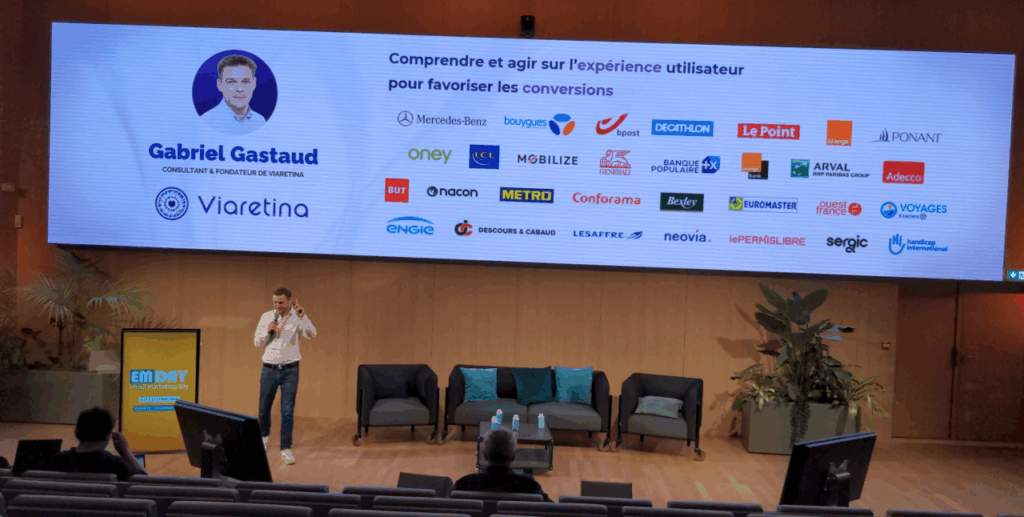
Gabriel Gastaud made his return to the emday stage with a particularly polished presentation and a remarkably structured speech on the concept of the augmented email marketer.
Among the key points discussed, Gabriel stressed the importance of design, pointing out that 94% of users form a first impression based on this aspect. He also emphasized the decisive role of emotion in purchasing decisions.
At the heart of his presentation were 5 concrete examples of AI prompts aimed at optimizing various facets of email campaigns, accompanied by the responses generated by these prompts. This practical demonstration illustrated the concrete contribution of artificial intelligence to the daily lives of email marketing professionals.
In conclusion, Gabriel announced the launch of a new AI-based automatic email analysis tool called Inbox Maestro : https://www.inboxmaestro.com
3/10 1pm: the long-awaited CNIL update on email tracking
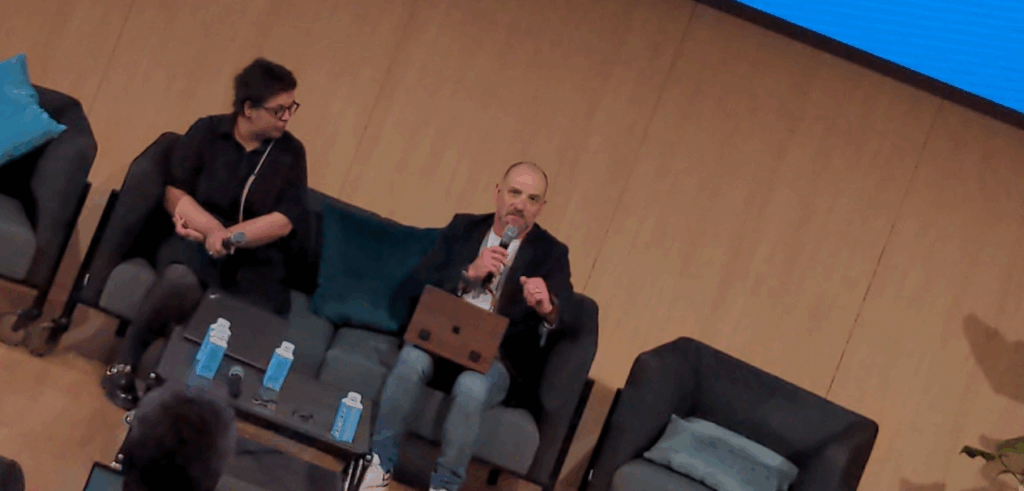
This session, moderated by Laurent Garnier, highlighted the CNIL's position on email tracking, with a presentation by Nacera Bekhat. The speaker's clarity and professionalism were particularly appreciated, providing precise answers on this complex subject.
The CNIL, whose role is to clarify and enforce privacy legislation, is currently consulting with the various players in the email ecosystem.
Important point to remember: the draft recommendation on tracking is not yet final, and is being revised in the light of the various feedbacks received.
According to Nacera Bekhat, the French authority's position is not fundamentally stricter than that of other national authorities in Europe.
As far as consent for existing databases is concerned, it would be possible to send a dedicated email (without tracking) to collect users' consent, provided that excessive solicitation practices are avoided.
One major issue remains to be resolved: the link between the consent given via a CMP in a non-connected environment and that required for email tracking practices.
More precision is still needed on anonymous tracking, which would at least provide statistics on openings per campaign. Whether to include other metadata in addition to the campaign ID, such as the e-mail domain without identifying the recipient, has not yet been definitively decided.
An important regulatory aspect: proof of consent to email tracking must be kept for as long as the consent is valid.
The current recommendation focuses mainly on tracking pixels, whose issue is similar to that of cookies. However, tracking links, although not specifically mentioned, remain subject to the general provisions of the RGPD.
While the principle is that consent should be separate for different purposes, it is acceptable to have a single consent for related purposes. A concept that will certainly be exploited by the email marketing world to reduce the impact of this new recommendation.
A major change for B2B: even business emails, usually exempt from prior consent, will be subject to the tracking consent requirement. And that's going to hurt.
In conclusion, the CNIL's position is largely in line with that long defended by Badsender. Despite industry resistance, regulation is gradually becoming an inescapable reality.
3/10 - 2:30 pm: GDMA benchmark
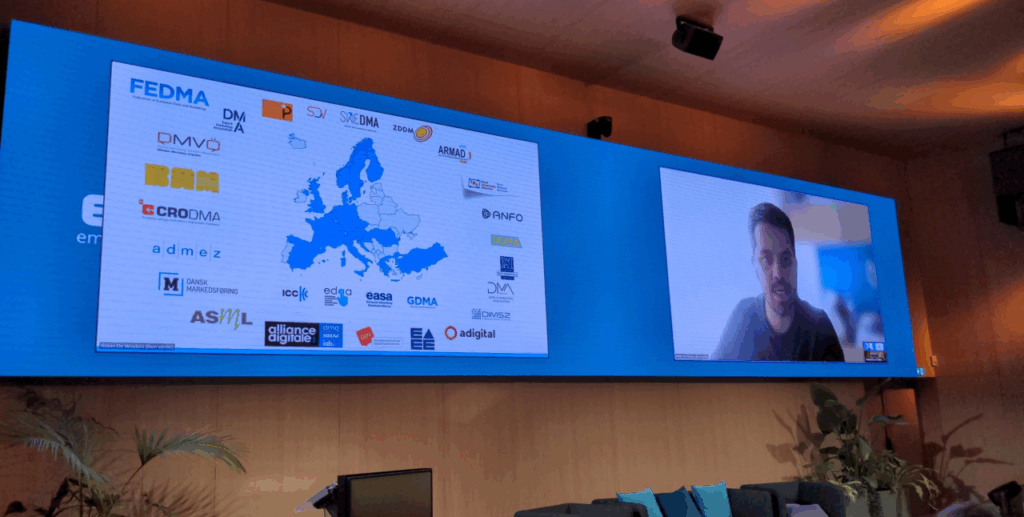
This session was presented by Robin de Wouters, Managing Director of FEDMA and GDMA. He unveiled the results of GDMA's international benchmark, a major study covering 61 countries, 11 million campaigns and 521 billion emails. The tool developed offers the possibility of applying filters by market, sector of activity or campaign size, enabling fine-tuned performance analysis.
Among the most striking trends, the retail sector stands out as having a significantly higher average number of campaigns than other industries, creating a considerable gap in emailing practices.
France outperforms the European average in terms of open rates (36.52%), but is below the same average for click rates (7.91% clicks on opens).
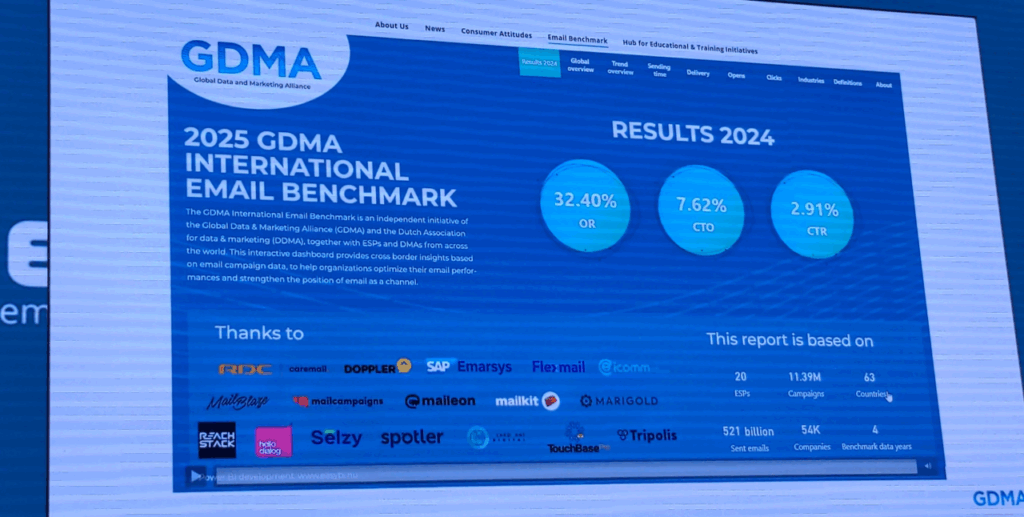
GDMA has launched a call for French routers to participate in the next edition of the benchmark. Currently, French data comes mainly from foreign providers operating on the French market, which may not perfectly reflect local specificities.
Link to the study https://globaldma.com/international-email-benchmark/
3/10 - 2:45pm: Best of Badsender
As this was my presentation, I didn't take any notes or photos, but here's the full presentation!
3/10 15h15: Deliverability round table! The long-awaited!
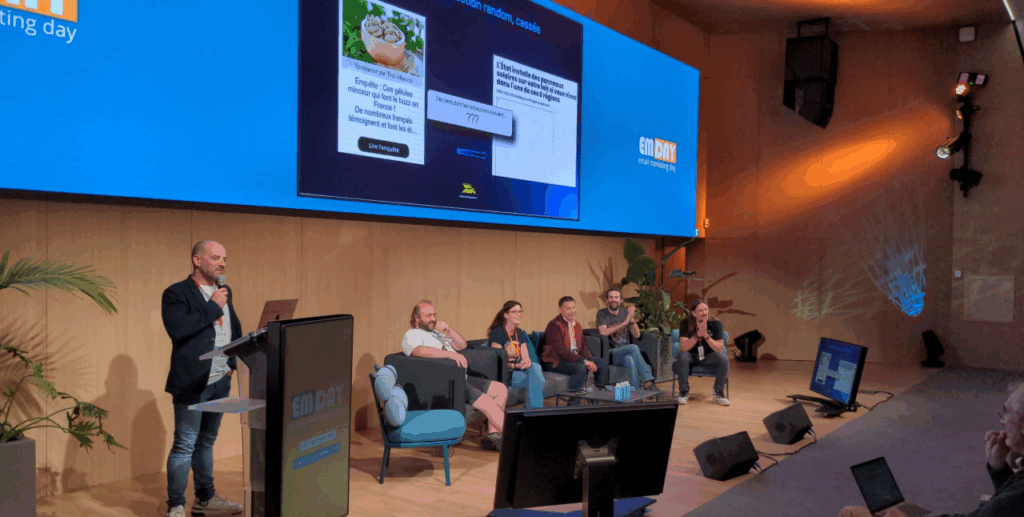
This round table, moderated by Laurent Garnier, brought together anti-abuse managers from France's leading email operators, accompanied by Stéphane Descamp from HornetSecurity, and Minh Ha Nguyen, Secretary General of Signal Spam. The session offered an in-depth look behind the scenes of email deliverability.
From the outset, Stéphane Decamps expressed his dissatisfaction with certain publisher practices deemed unclear: cross-publishing, confusion between advertising and content, multiplication of display names for the same content, and domains without associated web pages.
A detailed report was presented on filtering according to the implementation of authentication protocols by the various French messaging services:
- La Poste: emails sent without authentication are now systematically classified as spam. This policy is due to be tightened in the near future, with consideration being given to requiring the use of a stricter policy than "none" on DMARC.
- SFR: currently less stringent than La Poste, but alignment is underway.
- Orange: similar policies to other operators.
- Free: slightly less strict than La Poste, mainly due to less exposure to attacks. Tougher measures are envisaged if threats increase.
Simon Bressier raised the issue of insufficiently protected parked domains, which are becoming prime targets for spammers. Unused domains of major brands are increasingly being exploited.
Philippe Antuoro was keen to point out that, despite the common use of Hornetsecurity in spam filtering by French players, differences in behavior can be explained by the specific configurations and expectations of each operator.
Axelle Allouch stressed the importance of good domain name management. She strongly recommended limiting the number of domains and favoring an approach based on sub-domains, thus considerably facilitating the work of anti-spam systems. Simon Bressier also addressed the issue of tracking opens and its usefulness in identifying inactives, while acknowledging the difficulty for e-mail operators to provide alternative information to senders.
An interesting point concerning La Poste: users who have been inactive for more than 4 months are archived, and a bounce message is sent back to the senders.
Stéphane Decamps stressed the crucial importance of not targeting inactives to maintain a good reputation. He also argued that the removal of open tracking would be detrimental to recipients, as it would deprive senders of an essential tool to effectively manage the exclusion of inactives.
Axelle Allouch mentioned the imminent switch to a 0.3% complaints threshold at Orange, aimed at significantly reducing the volume of complaints. She also revealed that discussions were underway to develop a file dedicated to promotions.
Simon from La Poste, without mentioning specific figures, indicated that their complaint rates were broadly in line with those of the market. He observed that promo folders generate 5 to 10 times fewer complaints than the main inbox.
François Pétillon pointed out that, by default, Free offers a "Commercial" folder to receive all emails identified as such by HornetSecurity.
With regard to BIMI (Brand Indicators for Message Identification), the various speakers shared their positions:
- Free: faced with difficulties in implementing BIMI on Free's internal emails, is not considering immediate implementation.
- Orange: considers that BIMI is not a miracle solution, but could be adopted at a later date.
- SFR: although favorable to BIMI, attributes no impact to it on the sender's reputation.
- La Poste: already implements BIMI, but no reputation bonus.
A consensus emerged among all participants: BIMI does not improve the reputation of shippers.
I personally don't agree with some of the positions expressed on BIMI, and the discourse sometimes even seems to lack rigor on the subject. In my opinion, BIMI is an excellent tool for building recipient confidence, and the weaknesses mentioned could easily be overcome by improving the messaging UX.
On the whole, I found this roundtable on deliverability less captivating than previous editions. Discussions often focused on highly technical aspects, with a reiteration of the debate on tracking openings, which has already been widely addressed elsewhere. I'm not sure that the content perfectly matched the audience's real expectations.
Leave a Reply